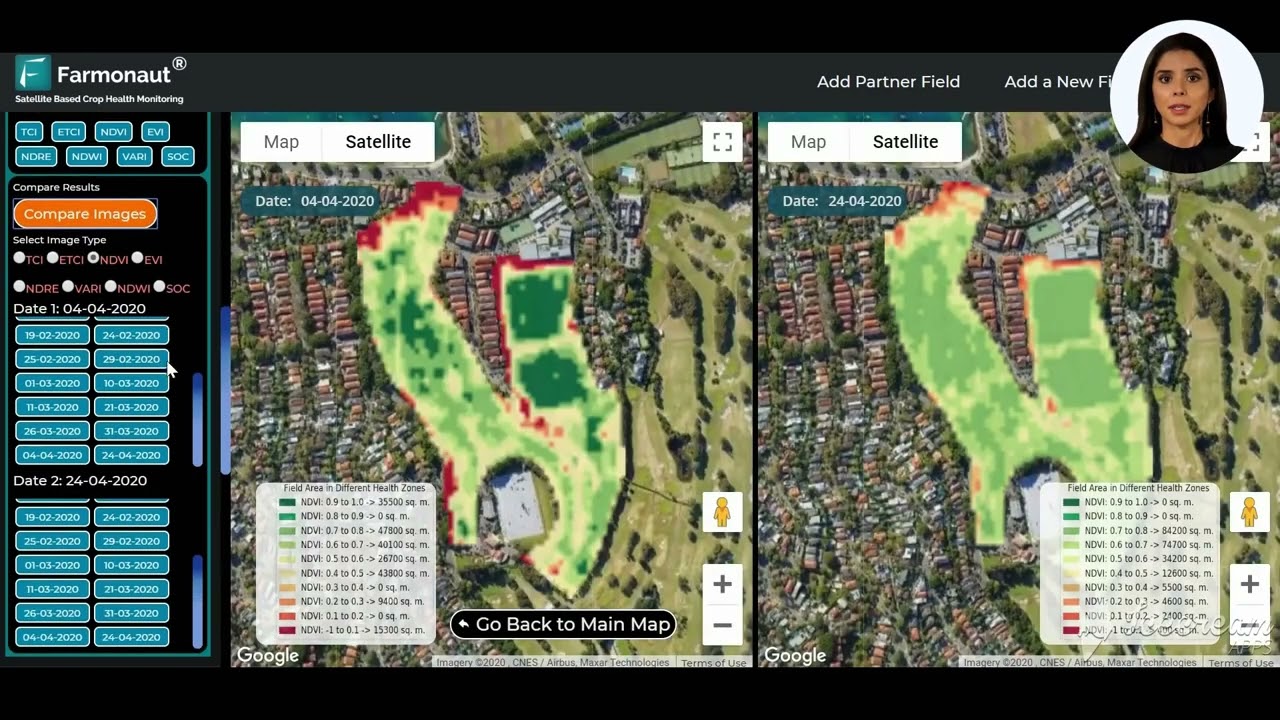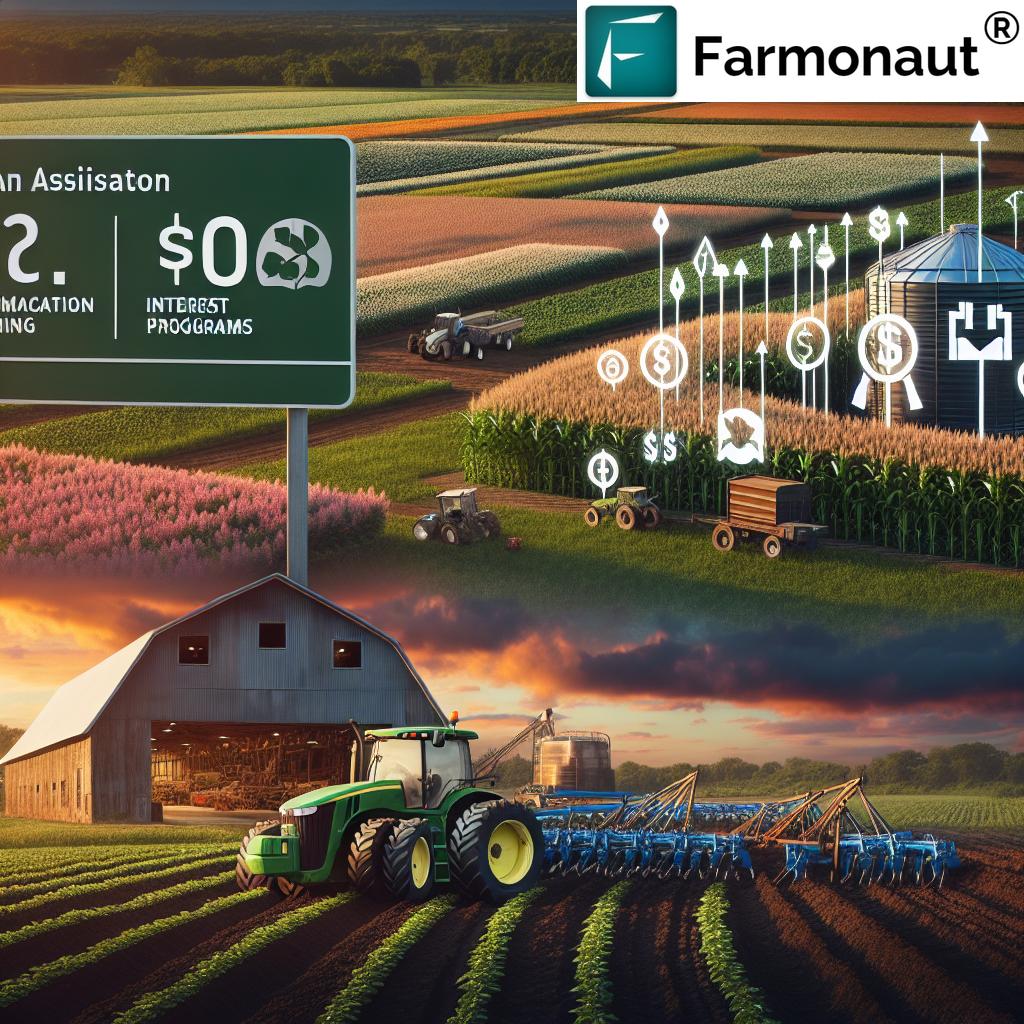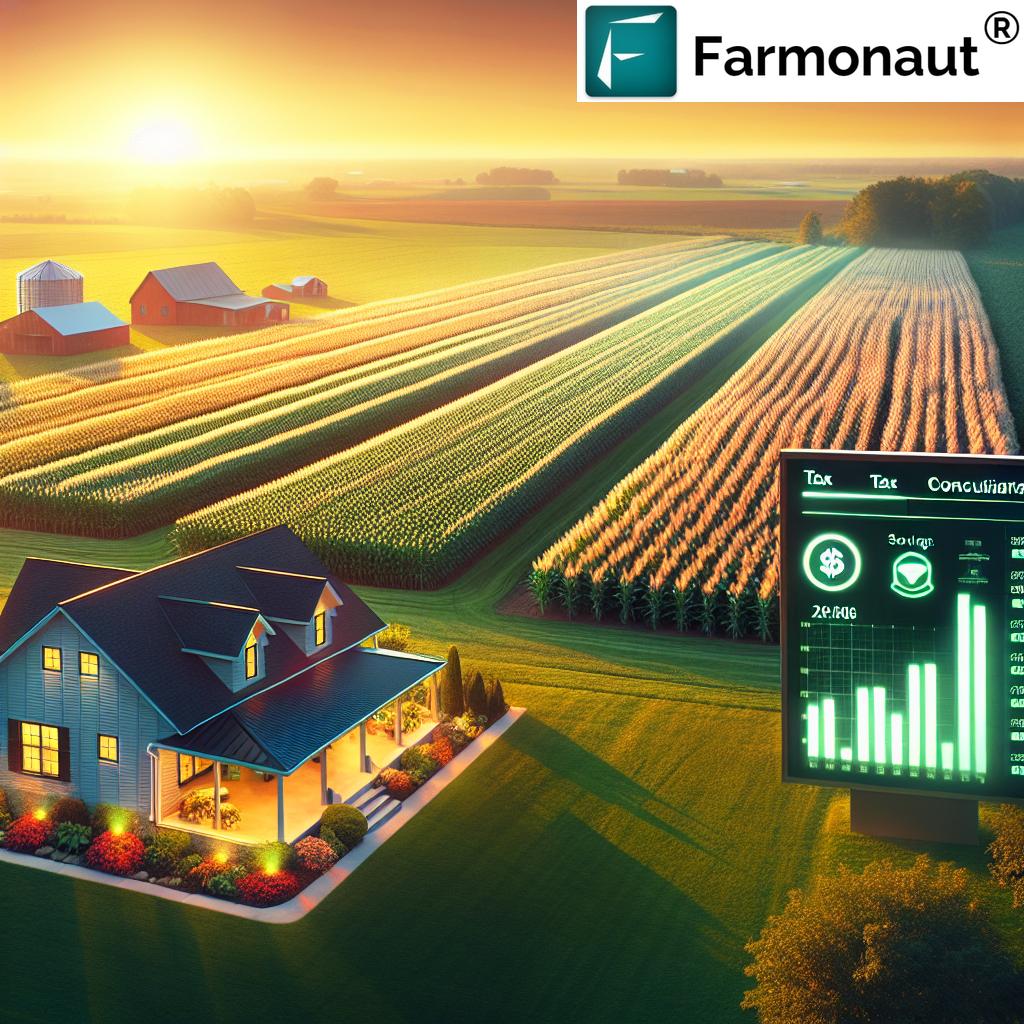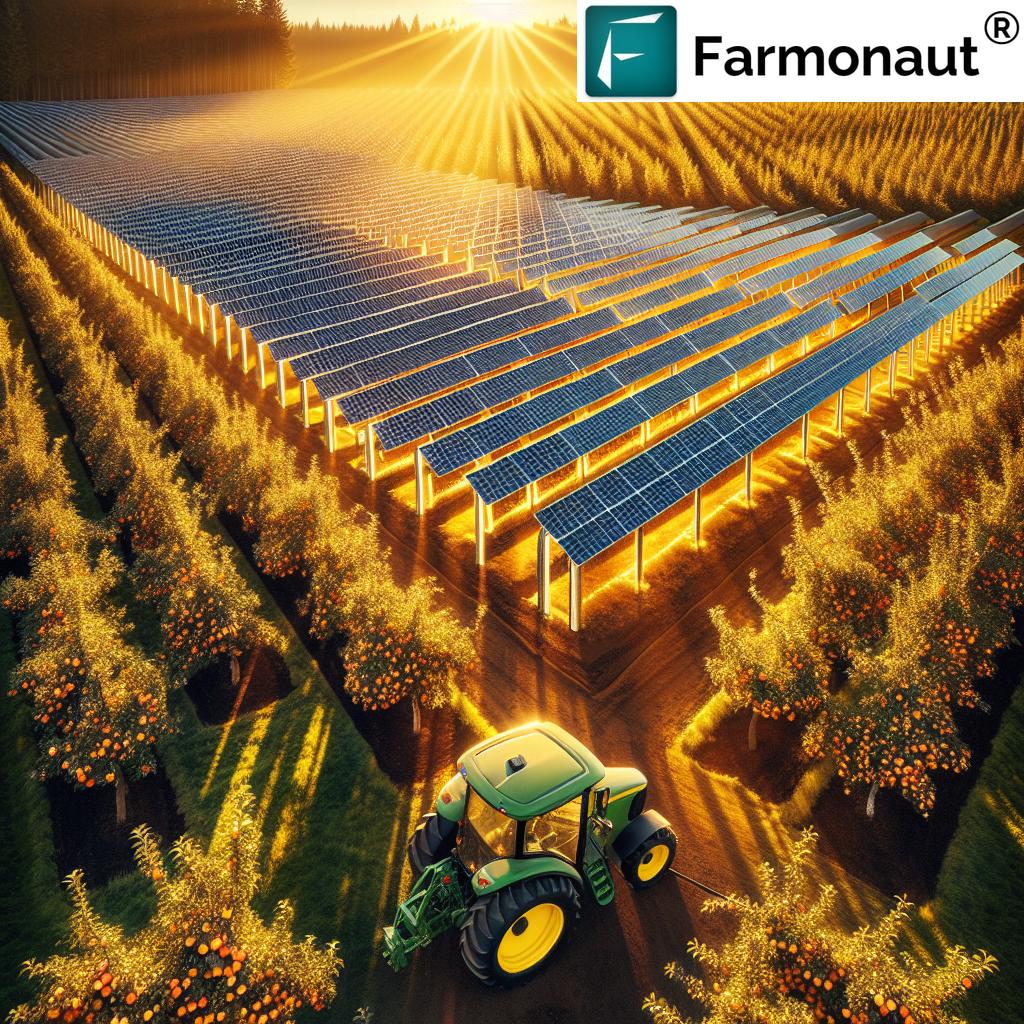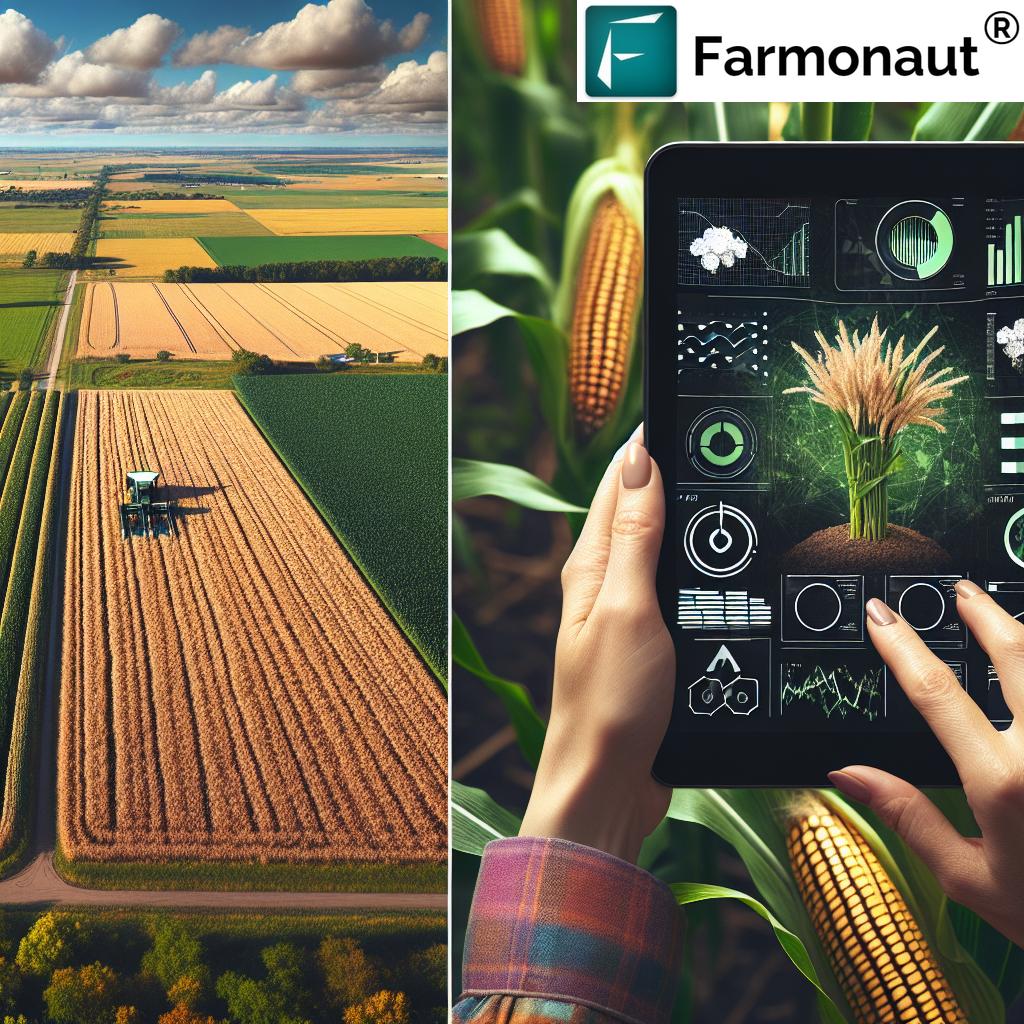Solar Farm Zoning in Illinois: Balancing Renewable Energy and Community Concerns
As we delve into the complex world of solar farm zoning in Illinois, we find ourselves at the crossroads of renewable energy advancement and community preservation. The debate surrounding solar array installations has ignited passionate discussions across the Prairie State, particularly in rural areas where farmland and residential communities intersect. In this comprehensive exploration, we’ll examine the multifaceted issues surrounding solar farm zoning regulations, community solar project benefits, and the renewable energy local impact on Illinois communities.
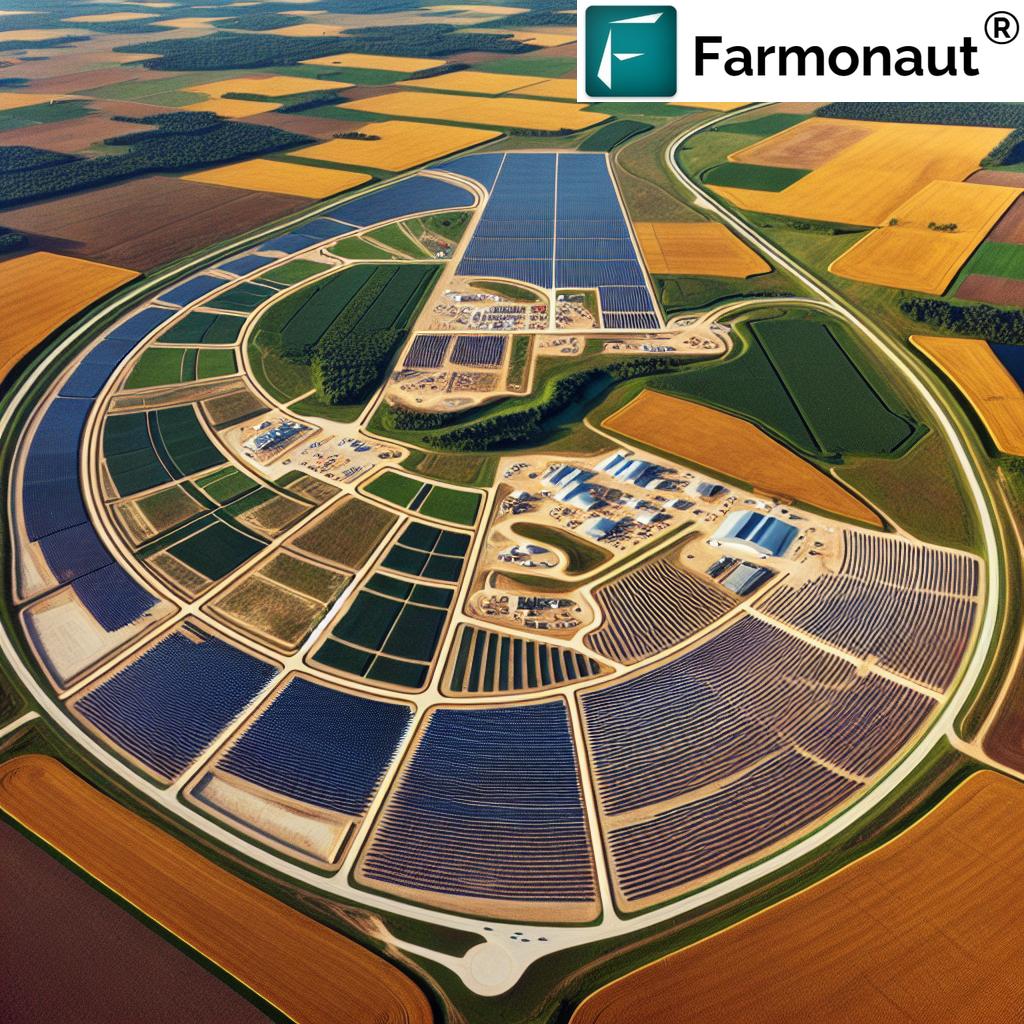
“Illinois solar farm zoning debates involve setback requirements, with some counties mandating 500-foot distances from residential areas.”
The Rise of Solar Energy in Illinois
Illinois has been making significant strides in renewable energy adoption, with solar power playing an increasingly important role. The state’s commitment to clean energy has led to a surge in solar farm proposals across various counties. However, this rapid growth has also brought to light the need for careful consideration of zoning regulations and their impact on local communities.
As we navigate this evolving landscape, it’s crucial to understand the various aspects of solar farm development and its effects on property values, agricultural land use, and community well-being. Let’s explore the key components of solar farm zoning and the challenges faced by stakeholders in Illinois.
Understanding Solar Farm Zoning Regulations
Solar farm zoning regulations are essential for ensuring that renewable energy projects are developed responsibly and in harmony with existing land uses. These regulations typically cover various aspects of solar array installation, including:
- Setback requirements from property lines and residential areas
- Height restrictions for solar panels
- Screening methods to minimize visual impact
- Environmental impact assessments
- Decommissioning plans for end-of-life solar installations
In Illinois, zoning regulations can vary significantly from one county to another, reflecting the diverse needs and concerns of local communities. This variability has led to ongoing debates about the most appropriate approach to solar farm development.
Community Solar Project Benefits
While concerns about solar farm installations are valid, it’s important to recognize the potential benefits that community solar projects can bring to Illinois residents:
- Clean, renewable energy production
- Reduced reliance on fossil fuels
- Potential energy cost savings for participants
- Local job creation in the renewable energy sector
- Increased energy independence for communities
Community solar gardens, in particular, offer an innovative approach to solar energy adoption. These projects allow multiple participants to benefit from a single solar installation, making clean energy accessible to those who may not have suitable properties for individual solar panels.
The Solar Array Installation Process
Understanding the solar array installation process is crucial for addressing community concerns and ensuring smooth project development. The typical steps include:
- Site selection and feasibility studies
- Obtaining necessary permits and approvals
- Land preparation and grading
- Installation of mounting structures and solar panels
- Electrical wiring and inverter setup
- Grid connection and testing
- Final inspections and commissioning
Each stage of the process requires careful planning and adherence to local regulations. Developers must work closely with county officials, utilities, and community stakeholders to ensure compliance and address any concerns that arise during installation.
Impact on Property Values and Rural Development
One of the most contentious issues surrounding solar farm development is its potential impact on property values. Residents in rural areas often express concerns about the visual impact of large-scale solar installations and how they might affect the desirability of nearby properties.
While some studies suggest that solar farms have minimal impact on property values, others indicate that proximity to large installations may lead to decreased property values in certain cases. The effect can vary depending on factors such as:
- The size and visibility of the solar farm
- Distance from residential areas
- Effectiveness of screening measures
- Local attitudes towards renewable energy
Balancing the need for renewable energy development with the preservation of rural character and property values remains a significant challenge for Illinois communities.
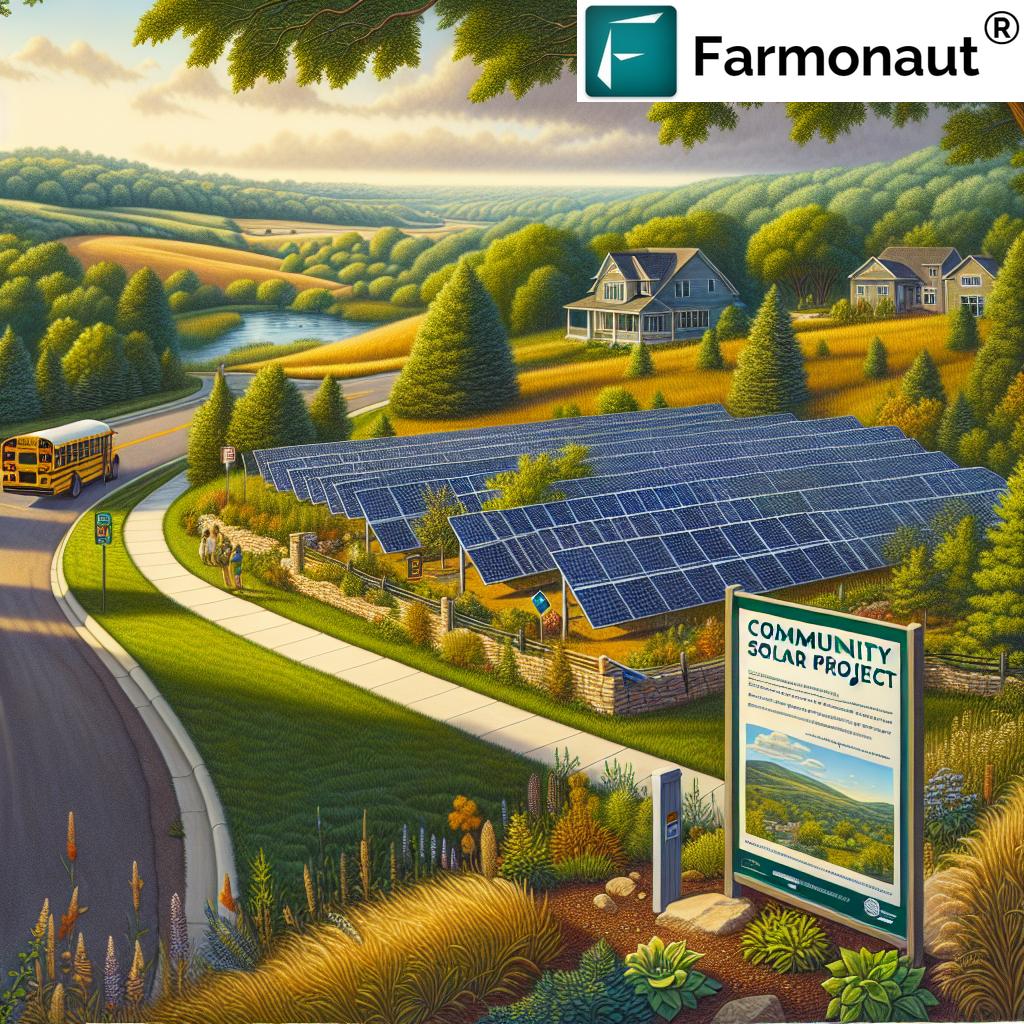
Environmental Considerations
While solar energy is generally considered environmentally friendly, the development of large-scale solar farms can have both positive and negative environmental impacts:
Positive Impacts:
- Reduction in greenhouse gas emissions
- Decreased reliance on fossil fuels
- Potential habitat creation for pollinators and wildlife
Potential Concerns:
- Loss of agricultural land
- Soil erosion during construction
- Impact on local ecosystems and wildlife
Addressing these environmental considerations is crucial for ensuring that solar farm development aligns with broader sustainability goals. Innovative approaches, such as agrivoltaics (combining solar panels with agricultural activities), can help mitigate some of these concerns.
“Solar farm decommissioning plans typically account for 20-30 year operational lifespans before land restoration considerations.”
Setback Requirements and Screening Methods
Setback requirements and screening methods are critical components of solar farm zoning regulations. These measures aim to minimize the visual impact of solar installations on neighboring properties and maintain the aesthetic character of rural areas.
Setback Requirements:
Setbacks typically specify the minimum distance between solar arrays and property lines, roads, or residential areas. In Illinois, setback requirements can vary widely between counties, ranging from a few hundred feet to over a thousand feet for larger installations.
Screening Methods:
Effective screening can help reduce the visual impact of solar farms. Common screening methods include:
- Vegetative buffers (trees and shrubs)
- Berms or earthen mounds
- Fencing with opaque materials
- Strategic panel placement to utilize natural topography
The choice of screening method often depends on local regulations, site characteristics, and community preferences.
Long-term Implications for Agricultural Land Use
The development of solar farms on agricultural land raises important questions about long-term land use and food security. While solar installations can provide a stable income for landowners, concerns persist about the potential loss of prime farmland.
Key considerations include:
- Balancing renewable energy goals with agricultural preservation
- Developing solar projects on marginal or less productive farmland
- Implementing dual-use strategies (e.g., agrivoltaics)
- Ensuring proper soil management during and after solar farm operation
Many counties in Illinois are grappling with these issues as they develop comprehensive solar farm zoning regulations. Striking the right balance between renewable energy development and agricultural preservation remains a significant challenge.
Solar Farm Decommissioning Plans
Decommissioning plans are a crucial aspect of solar farm development, addressing what happens when a solar installation reaches the end of its operational life. These plans typically cover:
- Removal of all solar equipment and infrastructure
- Site restoration and soil remediation
- Recycling or proper disposal of materials
- Financial guarantees to ensure decommissioning costs are covered
Effective decommissioning plans help alleviate concerns about long-term land use and ensure that sites can be returned to their original state or repurposed for other uses.
Stakeholder Perspectives
The debate surrounding solar farm zoning in Illinois involves various stakeholders, each with unique perspectives and concerns:
Local Residents:
- Concerns about property values and rural character
- Interest in renewable energy and potential cost savings
- Worries about noise, glare, and aesthetic impacts
Farmers and Landowners:
- Potential for stable, long-term income from leasing land
- Concerns about loss of productive farmland
- Interest in diversifying income sources
Solar Developers:
- Need for clear, consistent zoning regulations
- Interest in expanding renewable energy capacity
- Challenges in balancing project economics with community concerns
County Officials:
- Balancing economic development with community interests
- Developing comprehensive zoning regulations
- Addressing environmental and land use concerns
Understanding and addressing these diverse perspectives is crucial for developing effective solar farm zoning policies that benefit all stakeholders.
Comparative Analysis of Solar Farm Zoning Regulations
| County Name | Minimum Setback Requirements (feet) | Maximum Solar Array Height (feet) | Screening Method Requirements | Farmland Impact Mitigation Measures | Decommissioning Plan Requirements | Property Value Protection Policies |
|---|---|---|---|---|---|---|
| Macon County | 250 | 15 | Vegetative buffer | Soil conservation plan | Required with financial guarantee | Property value guarantee program |
| Sangamon County | 500 | 20 | Fencing and vegetation | Agricultural impact mitigation agreement | Required with bond | Setback-based protection |
| DeKalb County | 100 | 12 | Natural screening preferred | Dual-use encouraged | Required with escrow account | Case-by-case evaluation |
| McLean County | 200 | 15 | Berms and vegetation | Prime farmland avoidance | Required with letter of credit | Complaint resolution process |
| Champaign County | 150 | 15 | Flexible, site-specific | Pollinator-friendly plantings | Required with periodic updates | Noise and glare standards |
This comparative analysis highlights the diversity of approaches to solar farm zoning across Illinois counties. Each jurisdiction has tailored its regulations to address specific local concerns and priorities, resulting in a complex regulatory landscape for solar developers and communities to navigate.
The Role of Technology in Solar Farm Management
As the solar industry continues to evolve, technological advancements play a crucial role in improving the efficiency and management of solar farms. Innovative solutions, such as those offered by Farmonaut, are helping to address some of the challenges associated with solar farm development and operation.
Farmonaut’s satellite-based technologies can assist in various aspects of solar farm management, including:
- Site selection and analysis
- Environmental impact assessments
- Monitoring of vegetation growth around solar installations
- Tracking changes in land use over time
By leveraging these advanced tools, solar developers and local authorities can make more informed decisions about solar farm placement and management, potentially mitigating some of the concerns raised by community members.
For instance, Farmonaut’s carbon footprinting capabilities can help quantify the environmental benefits of solar farms, providing valuable data for policymakers and community discussions. Additionally, the company’s fleet management solutions can optimize the maintenance and operation of solar installations, reducing potential disturbances to neighboring properties.
Future Outlook for Solar Farm Zoning in Illinois
As Illinois continues to pursue its renewable energy goals, the landscape of solar farm zoning is likely to evolve. Some potential developments to watch for include:
- Standardization of zoning regulations across counties
- Increased focus on agrivoltaic solutions
- Development of more comprehensive property value protection measures
- Integration of advanced monitoring and management technologies
- Greater emphasis on community engagement and benefit-sharing models
The future of solar farm zoning in Illinois will depend on ongoing dialogue between developers, communities, and policymakers to find balanced solutions that promote renewable energy while addressing local concerns.
Conclusion
Solar farm zoning in Illinois represents a complex challenge at the intersection of renewable energy development, community interests, and agricultural preservation. As we’ve explored in this comprehensive analysis, there are numerous factors to consider, from setback requirements and screening methods to long-term land use implications and stakeholder perspectives.
While the path forward may not be straightforward, it’s clear that continued dialogue, innovative approaches, and the integration of advanced technologies will be crucial in finding balanced solutions. By carefully considering the diverse needs of all stakeholders and leveraging tools like those offered by Farmonaut, Illinois can work towards a future where solar energy development coexists harmoniously with rural communities and agricultural traditions.
As the renewable energy landscape continues to evolve, it’s essential for all parties involved to remain engaged, informed, and open to creative solutions that can help Illinois meet its clean energy goals while preserving the character and vitality of its rural communities.
FAQ Section
- Q: What are the main concerns surrounding solar farm development in Illinois?
A: The main concerns include impact on property values, loss of agricultural land, visual aesthetics, and potential environmental effects. - Q: How do solar farms affect property values?
A: The impact can vary, with some studies showing minimal effect and others indicating potential decreases in property values for nearby residences. - Q: What are setback requirements for solar farms?
A: Setback requirements vary by county but typically range from 100 to 500 feet from property lines or residential areas. - Q: How long do solar farms typically operate before decommissioning?
A: Most solar farms have an operational lifespan of 20-30 years before decommissioning is considered. - Q: Can farmland be restored after a solar farm is decommissioned?
A: Yes, with proper decommissioning plans and soil management practices, land can often be restored to agricultural use.
Earn With Farmonaut: Affiliate Program
Earn 20% recurring commission with Farmonaut’s affiliate program by sharing your promo code and helping farmers save 10%. Onboard 10 Elite farmers monthly to earn a minimum of $148,000 annually—start now and grow your income!
Farmonaut Subscriptions
Access Farmonaut’s innovative agricultural solutions:
For developers interested in integrating Farmonaut’s satellite and weather data into their own systems, check out our API and API Developer Docs.




